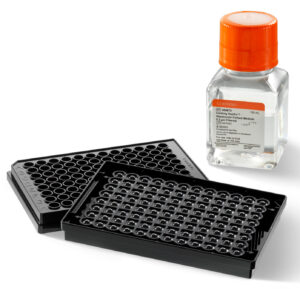Sponsored content provided by
Drugs that fail in late stages of development create one of the biggest challenges in global healthcare. In fact, less than 10% of the drugs that move into clinical development survive to approval. For drugs that do reach the market but are withdrawn, drug-induced liver damage is the most common cause. Consequently, drug developers always look for ways to improve the likelihood of drugs making it to market and staying there, where these treatments can help patients. Three-dimensional (3D) cultures, such as spheroids, provide some of the most exciting opportunities in drug testing and disease research.
“Currently, our preclinical models, either cell-based or animal-based, are not sufficient to predict the liver liability,” says Feng Li, PhD, a development associate at Corning Life Sciences. “Multiple newer models are underway for attacking this problem.”
One of those models is human liver spheroids. These hepatic cells cultured in 3D shapes can be used to predict the likelihood that a drug will cause a negative response in the liver. The human liver cells should make a better model than, say, rodent models. In fact, Li points out that rodent models of liver toxicity provide as little as 50% accuracy—about like flipping a coin.
Plus, these cell structures allow primary human hepatocytes to live longer than the week-long life that is common in 2D culturing. So, human liver spheroids allow longer studies for the effects of drugs over time. This technology is already in use. Right now, pharmaceutical companies are adopting liver spheroids to study a drug’s toxicity or metabolism,” says Li.
A simpler solution
Although spheroids offer many benefits—less expensive than primate models, applicable to high-throughput tasks and so on—working with them can get complicated. For example, only about half of donor lots of human hepatocytes work when trying to make a liver spheroid, Li says.
“Anyone wanting to work with these cells must do the prescreening to find a suitable lot of human hepatocytes, and that’s costly,” he explains.

Assay-ready 3D Liver Spheroid Kit
So, scientists at Corning Life Sciences developed screening methods and criteria to select suitable hepatocytes for creating spheroids. Scientists can buy these human liver spheroids to work with alone or in the new, all-in-one Corning® HepGo™ assay-ready 3D liver kit, which comes with one human liver spheroid per well in a 96-well spheroid microplate plate and companion media. In this way, pharmaceutical scientists can easily use human liver spheroids in imaging and biochemical studies. The kit allows both imaging-based and biochemical assays to be performed on the same plate—no transfer required. This streamlines the process, reduces time and cost, and reduces the potential for error.
In the next few years, Li envisions many more uses of liver spheroids. One important and obvious application that he mentions is studying liver diseases. For instance, the American Liver Foundation notes that about one in four Americans suffers from nonalcoholic fatty liver disease. “Advance models of human liver spheroids could serve as a model of this liver condition,” Li says.
Tomorrow’s spheroids could also be more complex, such as including more cell types. “You could put them all together to make something more like an organ,” Li explains. Such a spheroid could include hepatocytes, immune cells, vascular cells, and more. Vascularization will be required to make spheroids bigger than the roughly 200-micron ones being used today. Otherwise, cells inside will die without oxygen and nutrients.
Li also imagines a variety of spheroids—liver, brain, and so on—attached to a microfluidic chip. He describes this as a “mini-body.” Then, drugs could go through the liver to test the direct impact on that organ and then researchers can analyze the impact of the drug’s metabolites on other organs on the chip.
In thinking across all of these opportunities ahead, Li says, “Down the road, I think the different technologies can come up with a more predictable preclinical human model.
“That’s one of the main things that the pharmaceutical industry needs. ”
Learn More about the Corning® HepGo™ Assay-Ready 3D Liver Spheroid Kit at www.corning.com/lifesciences

